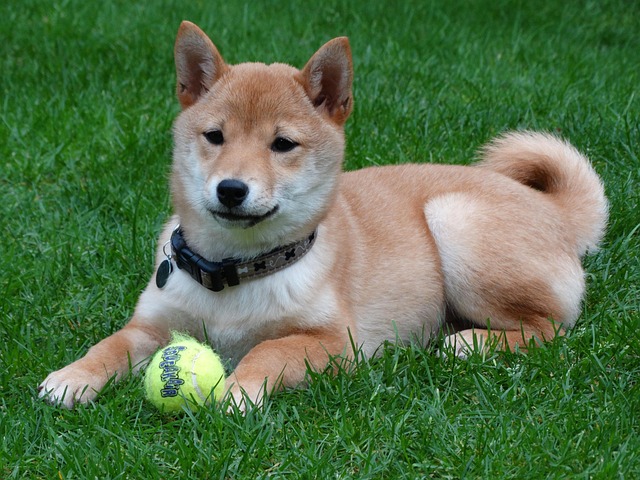
How do i train my dog to be obedient?
Watching your dog dart across the park ignoring your calls isn’t just frustrating—it can put them at risk near busy streets or public spaces.
Shiba Inu puppies are smart but stubborn—their independent streak means potty training needs consistency, not just tricks. Start by syncing trips outside with their natural rhythms: right after waking up, 15-20 minutes after meals, and once playtime ends. Choose a consistent spot in your yard or nearby park; the familiar smell helps them associate it with going potty. Carry a small bag of their favorite treats, like freeze-dried chicken bits, to reward them immediately when they go—timing matters more than the size of the treat here.
Invest in biodegradable potty pads for indoor emergencies, especially on rainy days when walks might be short. Place the pads in a quiet corner away from their food and bed; Shibas dislike soiling areas where they eat or rest, which works in your favor. If you catch them sniffing or circling (classic signs they need to go), gently guide them to the pad or outside—don’t scold, just redirect. This keeps the process positive, which is key for a breed that shuts down with harsh correction.
 Always use a sturdy harness and leash for outdoor trips, even in your yard. Many U.S. cities and European towns have leash laws that apply to puppies too, and failing to comply can lead to fines—some areas charge \(50 to \)200 for off-leash violations. Bring poop bags every time; leaving waste behind isn’t just rude, it’s illegal in most public spaces. Registering your Shiba Inu with local authorities (required in places like California and the UK) also ties into responsible training, as it ensures your pup is part of the community’s pet safety system.
Always use a sturdy harness and leash for outdoor trips, even in your yard. Many U.S. cities and European towns have leash laws that apply to puppies too, and failing to comply can lead to fines—some areas charge \(50 to \)200 for off-leash violations. Bring poop bags every time; leaving waste behind isn’t just rude, it’s illegal in most public spaces. Registering your Shiba Inu with local authorities (required in places like California and the UK) also ties into responsible training, as it ensures your pup is part of the community’s pet safety system.
Accidents will happen—don’t panic. Grab an enzyme-based cleaner (avoid ammonia, which smells like urine to dogs) and blot the area thoroughly. Scrubbing or yelling can make your Shiba associate going potty with fear, so stay calm. Keep a log for the first few weeks: note when they eat, sleep, and go outside. This helps you spot patterns, like a mid-morning potty break, and adjust their schedule to prevent more accidents.
Remember, Shiba Inus learn best with short, frequent sessions—10 minutes of focused training is better than a 30-minute slog. If they resist, take a break and try again later; forcing it will only slow progress. Over time, their stubbornness fades as they learn to trust your cues. Celebrate small wins, like a successful trip outside or using the pad, to build their confidence.
Potty training a Shiba Inu puppy takes patience, but it’s worth it to build a happy, healthy routine. By combining consistency, positive reinforcement, and respect for local laws, you’ll turn those early accidents into a thing of the past. Your Shiba will not only be well-trained—they’ll be a welcome, compliant member of your neighborhood too.

Watching your dog dart across the park ignoring your calls isn’t just frustrating—it can put them at risk near busy streets or public spaces.

New puppy owners often find themselves rushing to clean up accidents before they set in, and that’s where puppy pad training becomes a game-changer.

If you've noticed your dog's waistline disappearing and your veterinarian has mentioned those few extra pounds, your first instinct might be to simply reduce the amount of food in their bowl.

Training a dog to use a designated spot indoors isn’t as daunting as many new owners fear, but it does take consistency and an understanding of your pet’s needs.

That moment of dread on a walk is all too familiar for many new dog owners. You see another dog approaching down the sidewalk of your neighborhood

If the sight of another dog on your neighborhood walk makes your heart sink as your own dog erupts into a frenzy of barking and lunging, you're not alone.